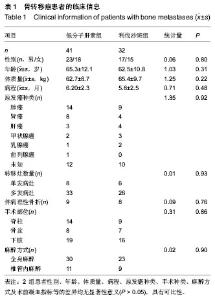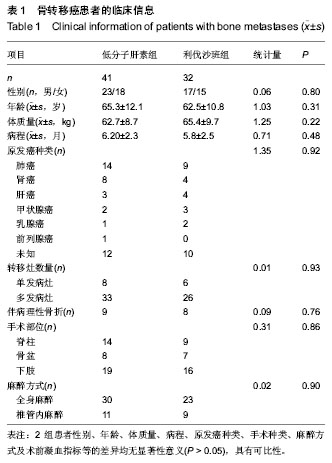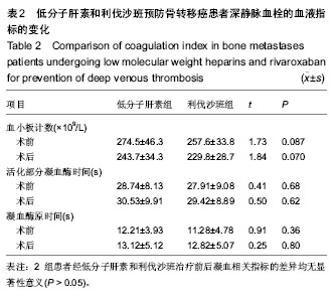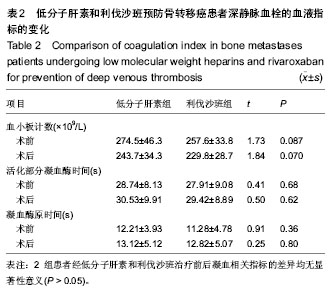| [1] Lyman GH, Khorana AA, Kuderer NM, et al. Venous thromboembolism prophylaxis and treatment in patients with cancer: American Society of Clinical Oncology clinical practice guideline update. J Clin Oncol. 2013;31(17): 2189-2204.
[2] Farge D, Debourdeau P, Beckers M, et al. International clinical practice guidelines for the treatment and prophylaxis of venous thromboembolism in patients with cancer. J Thromb Haemost. 2013;11(1):56-70.
[3] Lyman GH, Khorana AA, Falanga A, et al. American Society of Clinical Oncology guideline: recommendations for venous thromboembolism prophylaxis and treatment in patients with cancer. J Clin Oncol. 2007;25(34):5490-5505.
[4] Kahn SR, Morrison DR, Cohen JM, et al. Interventions for implementation of thromboprophylaxis in hospitalized medical and surgical patients at risk for venous thromboembolism. Cochrane Database Syst Rev. 2013;7:CD008201.
[5] Brown A. Preventing venous thromboembolism in hospitalized patients with cancer: improving compliance with clinical practice guidelines. Am J Health Syst Pharm. 2012;69(6):469-481.
[6] Huo MH, Muntz J. Extended thromboprophylaxis with low-molecular-weight heparins after hospital discharge in high-risk surgical and medical patients: a review. Clin Ther. 2009;31(6):1129-1141.
[7] Farge D, Durant C, Villiers S, et al. Lessons from French National Guidelines on the treatment of venous thrombosis and central venous catheter thrombosis in cancer patients. Thromb Res. 2010;125 Suppl 2:S108-116.
[8] 中华医学会外科学分会血管外科学组.深静脉血栓形成的诊断和治疗指南(第2版)[J].中华外科杂志,2012,50(7):611-614.
[9] Turpie AG, Lassen MR, Eriksson BI, et al. Rivaroxaban for the prevention of venous thromboembolism after hip or knee arthroplasty. Pooled analysis of four studies. Thromb Haemost. 2011;105(3):444-453.
[10] Colwell CW Jr, Froimson MI, Mont MA, et al. Thrombosis prevention after total hip arthroplasty: a prospective, randomized trial comparing a mobile compression device with low-molecular-weight heparin. J Bone Joint Surg Am. 2010; 92(3):527-535.
[11] 中华医学会骨科学分会.中国骨科大手术静脉血栓栓塞症预防指南[J].中华骨科杂志,2009,29(6):602-604.
[12] Akl EA, Vasireddi SR, Gunukula S, et al. Anticoagulation for the initial treatment of venous thromboembolism in patients with cancer. Cochrane Database Syst Rev. 2011;(4): CD006649.
[13] Fotopoulou C, Karavas A, Trappe R, et al. Venous thromboembolism in recurrent ovarian cancer-patients: A systematic evaluation of the North-Eastern German Society of Gynaecologic Oncology Ovarian Cancer Study Group (NOGGO). Thromb Res. 2009;124(5):531-535.
[14] 中华医学会骨科学分会骨肿瘤学组.骨转移瘤外科治疗专家共识[J].中华骨科杂志,2009,29(12):1177-1184.
[15] McManus RJ, Fitzmaurice DA, Murray E, et al. Thromboembolism. Clin Evid (Online). 2011;2011. pii: 0208.
[16] Delate T, Witt DM, Ritzwoller D, et al. Outpatient use of low molecular weight heparin monotherapy for first-line treatment of venous thromboembolism in advanced cancer. Oncologist. 2012;17(3):419-427.
[17] Kearon C, Kahn SR, Agnelli G, et al. Antithrombotic therapy for venous thromboembolic disease: American College of Chest Physicians Evidence-Based Clinical Practice Guidelines (8th Edition). Chest. 2008;133(6 Suppl): 454S-545S.
[18] 张晖,王东,孙海钰,等.髋关节置换后应用利伐沙班预防深静脉血栓疗效及安全性分析[J].中国组织工程研究,2013,17(30): 5440-5445.
[19] Thomas TF, Ganetsky V, Spinler SA. Rivaroxaban: an oral factor Xa inhibitor. Clin Ther. 2013;35(1):4-27.
[20] 勘武生,程文俊,王俊文,等.利伐沙班与低分子量肝素在初次全髋关节置换术后深静脉血栓形成防治中的比较研究[J].中华创伤骨科杂志,2012,14(6):480-483.
[21] 郝林.骨转移瘤的诊断及外科治疗[J].山东医药,2011,51(40):7-8.
[22] Niimi R, Hasegawa M, Sudo A, et al. Evaluation of soluble fibrin and D-dimer in the diagnosis of postoperative deep vein thrombosis. Biomarkers. 2010;15(2):149-157.
[23] Robert F. The potential benefits of low-molecular-weight heparins in cancer patients. J Hematol Oncol. 2010;3:3.
[24] Agnelli G, Bolis G, Capussotti L, et al. A clinical outcome-based prospective study on venous thromboembolism after cancer surgery: the @RISTOS project. Ann Surg. 2006;243(1):89-95.
[25] Imberti D, Agnelli G, Ageno W, et al. Clinical characteristics and management of cancer-associated acute venous thromboembolism: findings from the MASTER Registry. Haematologica. 2008;93(2):273-278.
[26] Geerts WH, Heit JA, Clagett GP, et al. Prevention of venous thromboembolism. Chest. 2001;119(1 Suppl):132S-175S.
[27] 吕厚山,徐斌.人工关节置换术后下肢深静脉血栓形成[J].中华骨科杂志,1999,19(3):155.
[28] 唐佩福,马宝通,曾炳芳,等.利伐沙班预防下肢创伤患者术后静脉血栓栓塞的多中心研究[J].中华创伤骨科杂志,2012,14(9): 737-740.
[29] 唐本强,郭卫,杨荣利,等.利伐沙班预防成人膝部骨肿瘤术后静脉血栓栓塞的临床观察[J].中华医学杂志,2012,92(39): 2768- 2771.
[30] Eriksson BI, Borris LC, Friedman RJ, et al. Rivaroxaban versus enoxaparin for thromboprophylaxis after hip arthroplasty. N Engl J Med. 2008;358(26):2765-2775.
[31] Lassen MR, Ageno W, Borris LC, et al. Rivaroxaban versus enoxaparin for thromboprophylaxis after total knee arthroplasty. N Engl J Med. 2008;358(26):2776-2786. |



